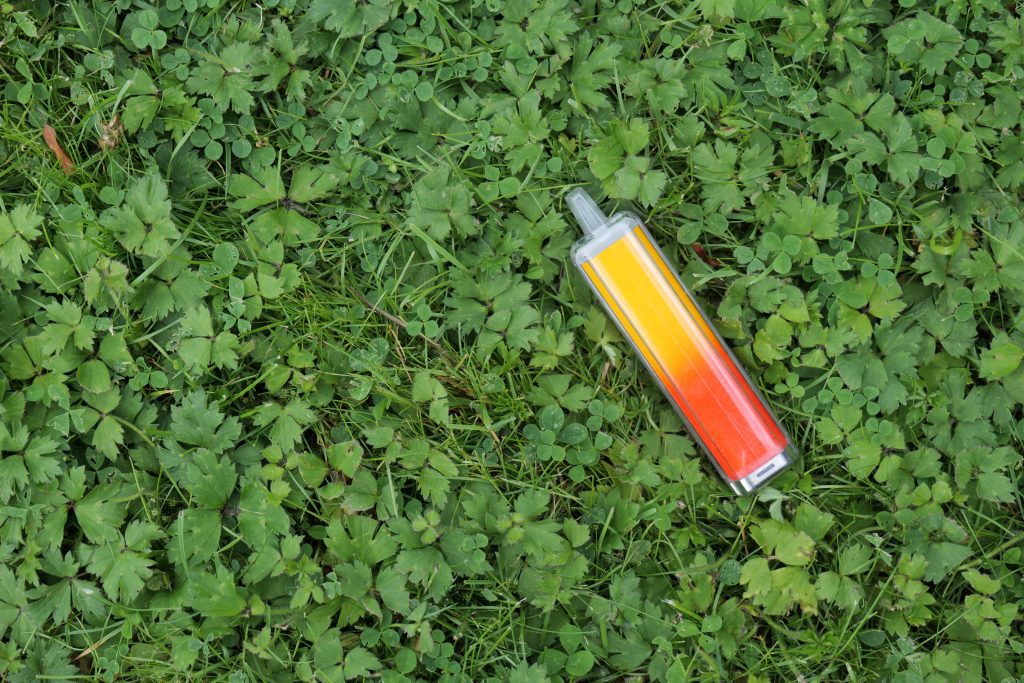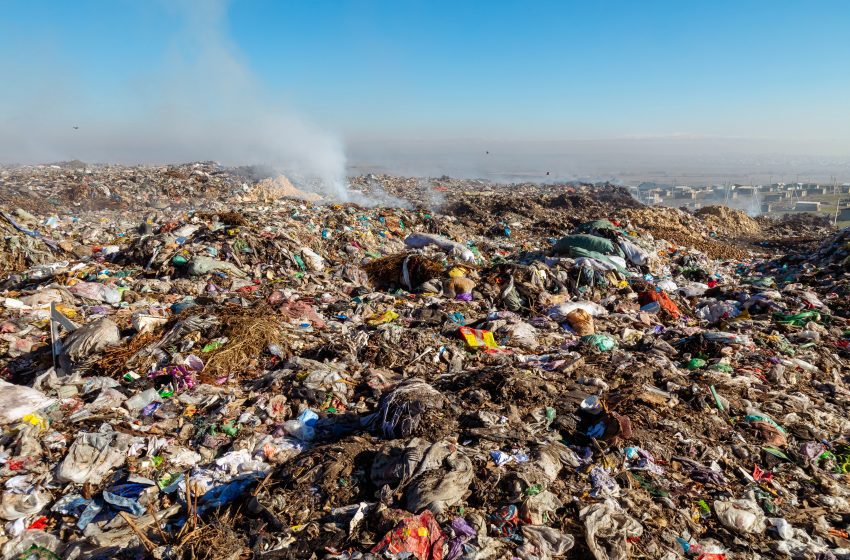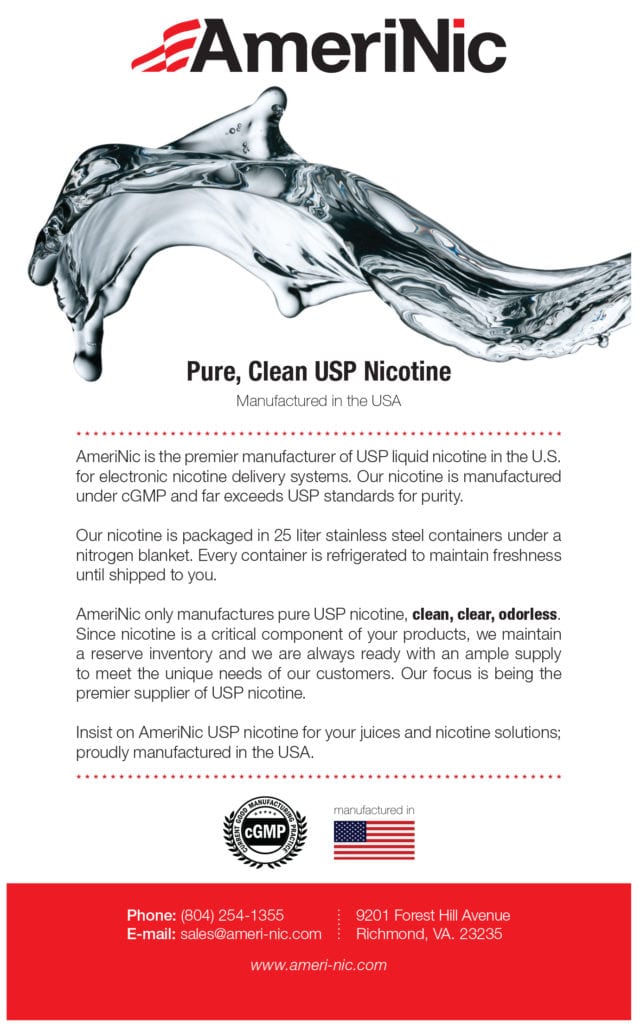
Disposable vaping products are quickly replacing cigarette butts as the most common form of litter.
VV staff report
It’s a real environmental issue. Studies suggest that disposable vaping products are quickly replacing cigarette butts as the most common form of litter found on streets and in waterways. More than 5,800 unique disposable products are now being sold in numerous flavors and formulations in the U.S., according to IRI data, up 1,500 percent from 365 in early 2020.
The disposable boom began in February 2020 when the U.S. Food and Drug Administration outlawed flavored nicotine e-liquids in prefilled cartridges for reusable vapes. This decision did not mention disposable vapes. As a result, sales of disposables shot up by 196.2 percent by March 2023, according to the CDC Foundation. By that time, about 11.9 million disposables were sold every month, surpassing cartridges with a 53 percent market share. Consumers in the U.S. throw away 4.5 disposable vapes per second. As the disposable market became popular in the U.S., it also began to go global.
In the U.K., Zurich Municipal, a subsidiary of insurance giant Zurich, published the results of its recent research that found that 2 million single-use vaping devices are discarded every week. The 2 million number quoted by Zurich Municipal is 700,000 units more than the 1.3 million that was estimated by Material Focus, which is funded through the country’s Waste Electrical and Electronic Equipment (WEEE) compliance fee.
The number of vapers in the U.K. has grown exponentially from 3.7 million in 2021 to 4.3 million last year, Zurich reported. The research estimated that around 78 percent of the 138 million vapes sold in the U.K. end up in general waste instead of being recycled.
A recent PennEnvironment Research and Policy Center report titled “Vape Waste: The Environmental Harms of Disposable Vapes” found that the accumulation of electronic waste from single-use e-cigarettes is outpacing efforts to create infrastructure to recycle them properly. A major hazard that vaping products pose to public health is that disposable e-cigarettes contain hazardous materials that can leach into soil and contaminate groundwater. In addition to creating plenty of plastic waste, discarded e-cigarettes can also be considered both e-waste (because of their circuitry and lithium-ion batteries) and hazardous waste (because they contain nicotine).
While combustible cigarette pollution takes up to 10 years to degrade, disposable vapes are nonbiodegradable, according to a recent PennEnvironment report. “Who looked at cigarette butts polluting our beaches and thought, ‘How can I make a product that will more effectively trash our oceans by never decomposing?’” the PennEnvironment report authors’ question.
Compounding the issue, the report found that there is currently no standard for recycling disposable vapes anywhere. Typically, once all the liquid has been atomized, the vape cannot be refilled. Most end up in landfills. However, even if there were recycling centers for vapes, the PennEnvironment report authors suggest that single-use vapes are still a bad idea.
“We can’t recycle our way out of the problems caused by increasing electronics manufacturing,” the PennEnvironment report states. “While it’s better to recycle than not, our priority should be making fewer devices … not churning out junk we don’t need in the first place.”
The problem isn’t going away by itself. Disposable e-cigarettes have the potential to make a massive impact on the environment, according to a 2018 article in the American Journal of Public Health, and tighter regulations on one-use vapes are needed to avoid a potential environmental disaster, as noted in a letter published in 2022 in Lancet Respiratory Medicine.

The United Nations reported that “recycling activities are not adequate to keep up with the expanding production of e-waste.” In the Americas, only 9.4 percent of all electronic waste is recycled—a statistic that further highlights the e-cigarette issue. Capacity isn’t the only factor here; many countries lack the technology necessary to take modern gadgets, such as disposable vapes, and convert them back into their component parts.
In 2019, the U.S. Drug Enforcement Agency (DEA) began to accept vaping devices and cartridges at any of its drop-off locations during its National Prescription Drug Take Back Day. However, the agency stated that “it is important to note that DEA cannot accept devices containing lithium-ion batteries. If batteries cannot be removed prior to drop-off, DEA encourages individuals to consult with stores that recycle lithium-ion batteries.” However, few stores accept used vapes in the U.S.
In the U.K., stores must bear the responsibility for taking back and disposing of any small electronic items, even if customers did not purchase them from that specific shop. Smaller shops who are unable to do this themselves are required to pay a fee to support the collection, disposal and treatment of these products when they become waste. However, according to the U.K. Vaping Industry Association, vapers and members of the vaping industry may not always be aware of this rule. This means many disposable vapes sold in the U.K. also end up in the traditional trash heap.
For many, the only way to combat the waste from disposable vapes is to eliminate the product category entirely. “These products harm our health and environment,” write the authors of the PennEnvironment report. “They waste the finite resources needed for manufacturing new technology. The only solution is a ban.”
The U.K. government is expected to propose plans to tackle vape disposal before the end of the year as part of a more comprehensive reform of e-waste regulations. The proposal could include an outright ban on disposable products, according to experts. “Without a doubt, disposable e-cigarettes should be banned. There is absolutely no reason that these cheap, readily available, brightly colored, recreational products should be single-use,” said Mike McKean of the Royal College for Paediatrics and Child Health.
Though there’s some enthusiasm for a disposable vape ban among Members of Parliament (a separate bill for this is currently progressing through the House of Commons), the government is unlikely to go all the way in its revamp of the WEEE regulation, according to Euro News.
In the U.S., meanwhile, officials have recognized the recent actions by the FDA to get flavored disposable vapes off the market; however, the PennEnvironment report calls for more enforcement. Many of the FDA’s actions have had little impact on the market. While a few states and cities have prohibited flavored vaping products, none have prohibited disposable products completely.
It’s also the responsibility of consumers to keep the environment in mind when purchasing vape products, according to the PennEnvironment report. “Adult vape users should only use approved products with refillable or cartridge-based systems,” it states. “Using disposable products is unsustainable.”
Numerous companies are trying to make vapes that can more easily be recycled. Dubai-based e-cigarette manufacturer ANDS has created a disposable vape that is 99.29 percent recyclable, according to Waste Experts. ANDS’ Slix disposable vape device is constructed of an outer casing made of 100 percent recyclable high-grade cardboard with a biodegradable silicone mouthpiece and end piece. ANDS is also partnering with Waste Experts to create a recycling program.
“While the analysis carried out by Waste Experts suggests that our single-use vape is highly recyclable, we will continue to work toward zero waste,” said Marina Murphy, senior director of scientific and medical affairs at ANDS. “We aim to build a high rate of recyclability into all our products by using high-quality recyclable materials and simple construction that allows for highly efficient dismantling. This contributes to a fast, efficient overall recycling process, which reduces waste management costs. This in turn helps to keep product prices competitive, creating a win-win for the environment and adult consumers who value our products.”
Vaping industry companies have a vested interest in tackling one of the industry’s major issues. FEELM, which makes ceramic coils used in many popular vape brands, is behind a new initiative encouraging consumers to send their single-use devices off for recycling. FEELM is one of the largest closed-system vape solution providers in the world.
“At FEELM, we believe that the responsibility of building a sustainable future extends beyond creating innovations,” a FEELM representative said. “This is the first industrial end-to-end disposable recycling scheme, including manufacturers, brands, delivery companies, waste management companies, retailers and ultimately the consumers. The scheme allows us to contribute to the planet’s well-being while also positively influencing the public perception of the vaping industry.”
Fadi Maayta, president of ANDS, warned that an outright ban on disposable vaping devices could drive former smokers back to combustible cigarettes, so the industry must search for a viable solution. “If these single-use vapes are restricted or banned over environmental fears as is being talked about in some circles—smokers could lose what many believe to be a very convenient, accessible and compelling alternative to conventional cigarettes,” he said.


